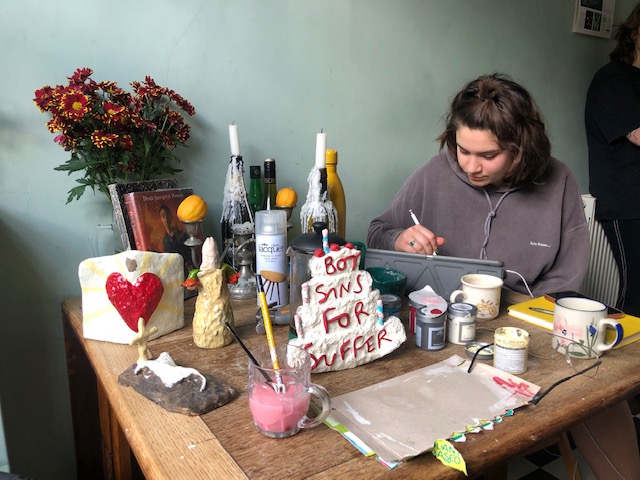Due to numerous lockdowns and extensive social distancing measures altering the regular function of university campuses, art students have had to repeatedly adapt in order to make the most out of their learning.
In the run up to the government’s roadmap outlining that students on practise-based courses, who require access to specialist equipment or facilities can return to campuses on 8th March, many students have set up makeshift studio spaces in their homes in order to keep on top of their artistic pursuits.
While virtual lectures and online learning tasks have been sufficient for most courses, those who are studying practical degrees and are reliant on in person studio time have had to take some of the biggest changes in their stride.
Daisy Trewartha Wyatt, an Illustration student at Falmouth University, outlined the difficulties of having no access to a studio in recent months. “Not having a set studio space has made maintaining a strong work ethic a lot harder because lines are blurred between working and relaxing,” she said.
A lack of separation between home and university has been challenging for every kind of student, but being cut off from creative environments such as art studios, which offer much more artistic freedom than a home environment, has forced many student artists to completely alter their practise and styles.
“I’ve had to adapt my style through working at home. It has become very heavily digital because it’s a lot harder to make physical work like ink, printing and painting in a home” explained Daisy.
Courtney Snow, who is studying BA Fine Art at Falmouth University, also weighed in on how her creative process has changed through working at home, “I’m currently working in my kitchen but I’m a bit cautious about making a mess because I really want my deposit back. My work has changed a lot. It has become smaller and the making process has become longer because I don’t leave it at the studio at the end of the day. I can’t separate myself from it if I’m making it at home.”

Without access to on campus studios, students on practical courses are having to make and store their work at home.
Although studying a hands on subject throughout a period where we’re encouraged to be predominantly hands off has undoubtedly come with difficulties, the arts are arguably at their most invaluable right now.
“It’s been a really interesting time for artists living in a pandemic because while most careers have been put on hold, a lot more people have paid attention to the arts, whether its physical work, film or music.” explained Daisy. “There’s been a lot of opportunity for artists to make work and sell work throughout the pandemic just because people have given those fields more attention”
Billy Wickham Clarke, an Illustration student in his third year, shared how the pandemic has infiltrated his work and even inspired new ideas. He said, “I’m about to start the final artwork for an editorial piece around the absence of touch during the pandemic. I plan to use my favourite printmaking technique, monotype.”
The absence of touch is something that’s proving difficult for many artists who rely heavily on personal interaction. Billy explained, “I think the biggest difficulty with no studio access is the lack of studio culture. Much of what is important to me as an illustrator is feedback and using each other to generate ideas.”


